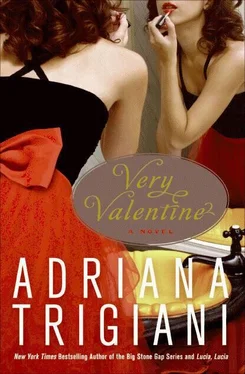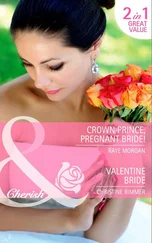The cold rain that brings the first chill of autumn to New York City woke me this morning. The boiler kicked on as the temperature dipped below fifty-five. The scent of fresh paint on the radiators, mixed with steam, signals winter on the way. As I pass Gram’s bedroom, she’s still asleep. How things have changed. Gram was up and in the shop before dawn. I was never an early riser, but now, with a mission in mind, I’m up with the sun.
I push open the glass door to the shop, prop it with a wedge of old wood, then set my mug of hot milk and espresso on an old rubber cat’s-paw heel and begin my rounds, flipping switches to turn on the work lights. Since our meeting with Alfred, I have savored every moment in this building. Each pair of shoes that we finish, pack, and ship galvanizes me to try and hang on to this shop. I can’t imagine a world where 166 Perry Street is anything but the Angelini Shoe Company, and anything but home. But there are moments when I am filled with despair about the fate of my future, and feel as though my dreams are slipping away, carried down the Hudson River and out to sea like a paper boat.
Our workshop is one enormous room, with areas assigned to particular tasks. There’s a half bath in the back that was once a closet. The workshop is spacious because it’s actually two stories high. There are windows on all four walls, very rare in a city building, giving us light throughout the day. When the storm clouds are low and dark, as they are this morning, it’s as if we are cloaked in gray chiffon. The light is muted, but it still breaks through.
The bay windows that face the West Side Highway create an old-fashioned storefront, turning us into a kind of aquarium for passersby who observe us as we work. Strangers often become mesmerized as they watch us press, hammer, and sew. We are so fascinating that PS 3 considers us a mandatory field trip every spring. The kids get a firsthand view of old-world craftsmanship, manual labor from centuries past. They find us as mesmerizing to watch as the seals at the Central Park Zoo.
I lift the key ring off the hook in the alcove by the door. I begin at the front, unlocking the folding metal gates that secure the windows. I roll them off to the side and throw a large latch around them to hold them in place. About twenty years ago, Grandpop installed the gates because the insurance company told him they would raise his rates if he didn’t. Grandpop argued that the building had been safe since his father bought it in 1903, and why should he change? The insurance adjuster said, “Mr. Angelini, your building hasn’t changed since 1903, but people have. You need the gates.”
When my great-grandfather arrived here, he built wooden storage closets all the way around the room. The wood grain is a mix of anything he could find-planks of oak, ends of mahogany, and strips of tiger-eye maple. The patchwork colors and texture of the wood are a reminder that my grandfather built the shop out of remnants from the Passavoy Lumberyard, which used to operate on the corner of Christopher Street. The closets reach to the ceiling. When we were kids, we used to play hide-and-seek inside them.
We store our tools, fabric, leather, and supplies in the closets. The organization of the goods has not changed since the shop opened. Great-grandpop built within the cupboards slanting shelves where we store the carved wooden models of various sizes of feet, called la forma . We build the structure of the shoe around these lasts, which were brought from Italy when my great-grandfather emigrated.
Another closet has a series of wooden dowels that hang horizontally from ceiling to floor. We use a stepladder to reach the wide bolt of sheer, gray-blue pattern paper at the top. Beneath it is a thick bolt of plain muslin, followed by a sumptuous selection of fabrics that alter as the seasons change. There’s double-sided white satin jacquard stitched in harlequin checks; embroidered cream silk patterned with loose flower petals in relief; eggshell velvet that shows a pale gold sheen in a certain light; sheer beige organza as stiff as fondant icing; and milky cotton linen textured with nubs of thread that give it the look of raw dotted swiss. Finally, at the very bottom of the closet, a dowel holds skeins of satin ribbon on small wheels in every shade from the palest pink to the deepest purple.
I remember when my sisters and I would hit Gram up for swatches to make dolls’ clothes. Our Barbies wore some first-class hand-cut Italian goods. And their accessories? With Gram’s supply of jet beads, ball fringe, and marabou feathers, our dolls were swathed in haute couture.
The leather, stacked in sheets, is stored in the largest of the closets. We keep squares of clean flannel between the patent leather sheets, and thin layers of pattern paper between the calfskin. The shelves in this closet are kept well oiled with lemon polish to keep the environment around the skins hydrated. The rich scent of leather and lemon wafts through the shop every time we open a closet door.
We keep by the entrance a small table and straight-backed chair that function as a desk. The phone, an old black model with a rotary dial, sits next to a red-leather-bound appointment book. Over the desk is a bulletin board covered in pictures of the grandkids, and a collage of our customers wearing our shoes in their full wedding regalia. The classic bridal photo comes in two varieties. It’s either a full shot of the bride lifting her hem to show her shoes, or she is barefoot and carrying them in her hands at the day’s end.
A small wooden statue of Saint Crispin, the patron saint of shoemakers, anchors the invoices on the desk. The statue was blessed by Gram’s priest in 1952. Shortly thereafter, the church renounced Crispin’s sainthood, and the statue was demoted from the breakfront upstairs to a paperweight in the shop.
Besides a stackable washer and dryer, there are three large machines in the back of the shop. The roller is a long apparatus with large, sleek, metal cylinders that stretch and smooth the leather. The buffer is about the size of a washing machine and features large hemp brushes, which polish the leather, breaking down the grain to give it a sheen. La Cucitrice is an industrial sewing machine used to stitch the soles and seams.
There’s an old ironing board with a blue paisley cover, and it has more than its share of coffee-colored burns, lots of them my doing. The iron itself is small and heavy, a triangle wedge with the metal handle covered in rattan. It, too, came from Italy with my great-grandfather. The iron takes a good ten minutes to heat up, but we wouldn’t think of buying a new one. My great-grandfather rewired it for electricity when he was a young man. Prior to that, they simply put the iron in the fireplace on an open grid to heat it.
Pressing is the first job an apprentice must learn. You’d be surprised by how long it took me to press fabric without having the edges curl. I thought I knew how to iron, but like every skill involved in making shoes, the stuff you thought you knew has to be relearned and refined. Everything we do is about pulling the construction elements together so that each shoe is perfectly molded to the foot of the individual customer. There can be no rough edges, wrinkles, bunching, or gathering. This is the luxury aspect of wearing a custom-made shoe. No one else could wear yours.
I look at my to-do list for the day. I have to sew beading on a pair of sateen pumps for a fall wedding; Gram has finished the shoe proper, now it’s mine to festoon. I go to the powder room to wash my hands.
My grandfather started a tradition of wallpapering this room with headlines that made him laugh from the New York daily newspapers. His favorite? From 1958: BABY BORN WITH FULL SET OF TEETH. I taped up TYING THE NUT when a fickle movie star married for the third time two summers ago. Gram added CROOK ASTOR when philanthropist Brooke Astor’s son was indicted for taking money from her estate prior to her death.
Читать дальше












